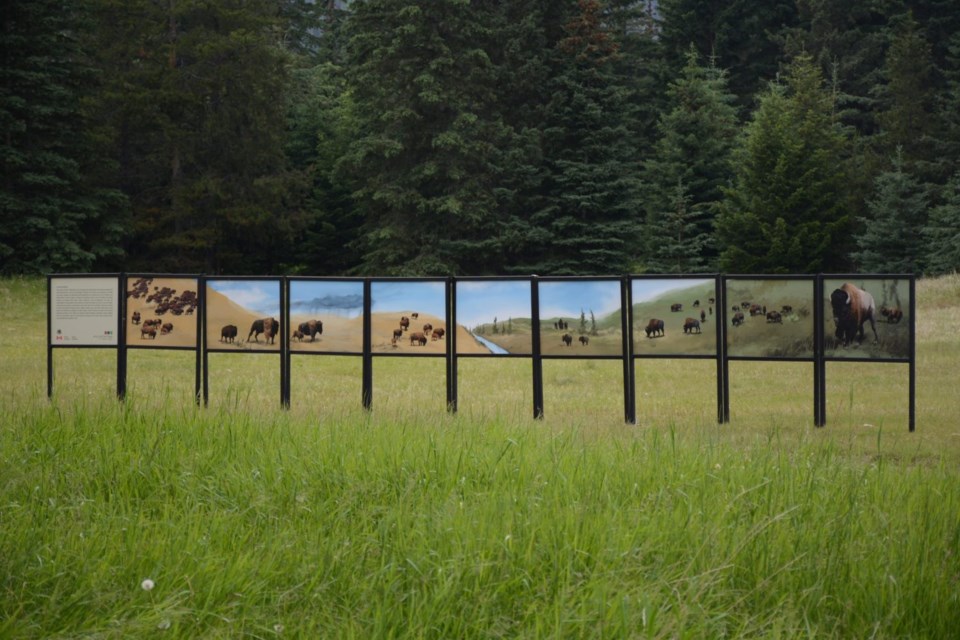A travelling exhibit was installed at the campground last week just in time for National Indigenous Peoples Day.
“Lii Buflo: A Métis Way of Life” was developed to use storytelling and visual art as an educational piece on how integral the animal was to Métis culture.
While bison is the more appropriate scientific name for the large plains animal that are native to Alberta, it has been more commonly referred to as buffalo. The two terms are used interchangeably for the same animal in this article.
“We were honoured to support this project and share the important relationship between bison and the Métis people,” said Parks Canada project co-ordinator Jessica Burylo.
“Specifically with Parks Canada, we are here to protect and present significant examples of Canada's most natural and cultural heritage. That's really the heart of our mandate.”
The exhibit was developed with a grant from Parks Canada’s Métis Reconciliation Fund to Arts and Heritage St. Albert. Everyone who worked on the project (from the advisory circle to artist Jesse Gouchey to the people who fabricated the standing panels) was Métis.
“I think that the most important thing that the members of the advisory circle really wanted was to highlight the relationship of Lii Buflo as our kin – as our relative – and how that relationship has really intertwined how Métis people have survived on the land for so long, and how integral they were to our original existence here in this space,” said Celina Loyer, Indigenous programmer at St. Albert’s Musée Héritage Museum who also acted as advisor on the exhibit.
The ten panels depict the story of a boy named Gabe speaking with his mooshum (meaning grandfather) about his upcoming field trip to see bison at Elk Island National Park.
Mooshum takes the opportunity to tell Gabe how the Métis are “forever connected to our buffalo relatives.”
The story he tells takes the readers through the buffalo hunt and the traditional uses of the animal for food and tools, for example.
Each panel is written in Michif (the language of Métis people), English and French, and so it functions as an educational cultural document that is accessible to many readers of all ages and different backgrounds.
“From those teachings, our Métis great grandmothers... our First Nations great grandmothers helped us to understand the importance of the bison and how it provided everything we needed,” Loyer said.
“It also fueled economic development in the communities by providing roads, pemmican... all the things that could be traded to forts for other things that we needed. And so it became basically a keystone like a pin in our society. When that was taken away, we had to adapt to other ways of living, and that changed where we lived and how we lived.”
The exhibit is set up near the playground area at Whistlers and will remain on display until the fall.




